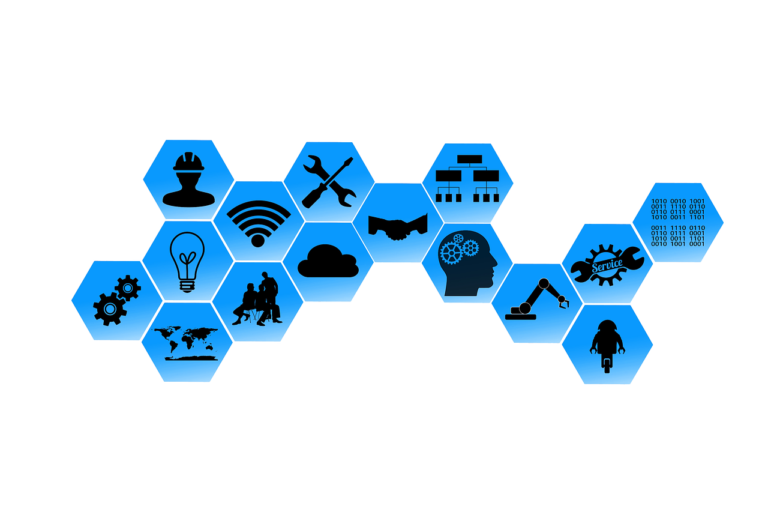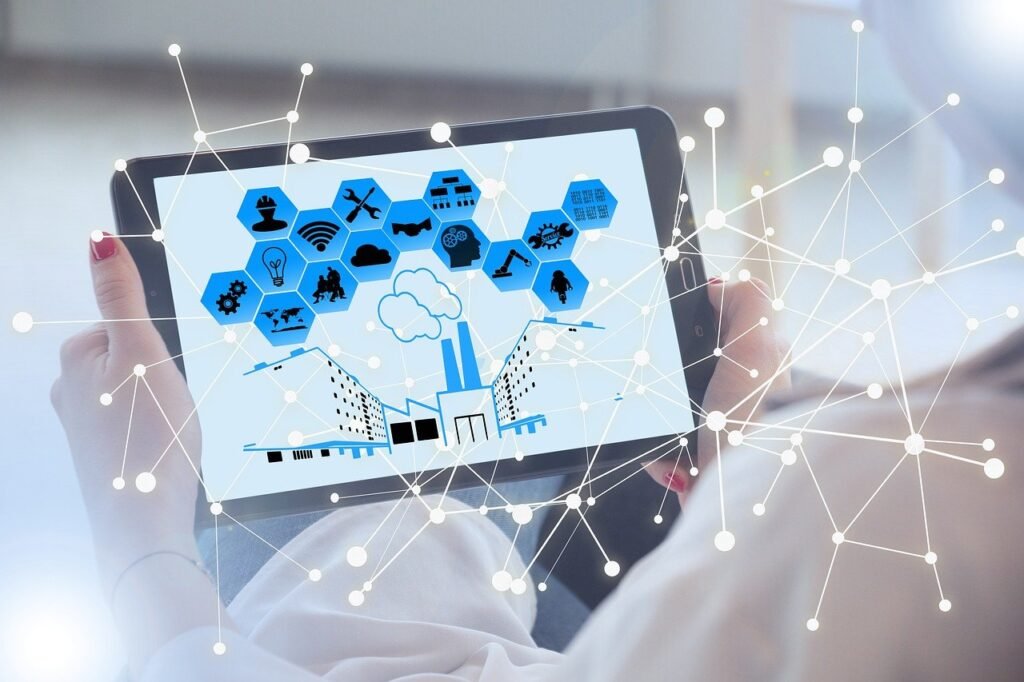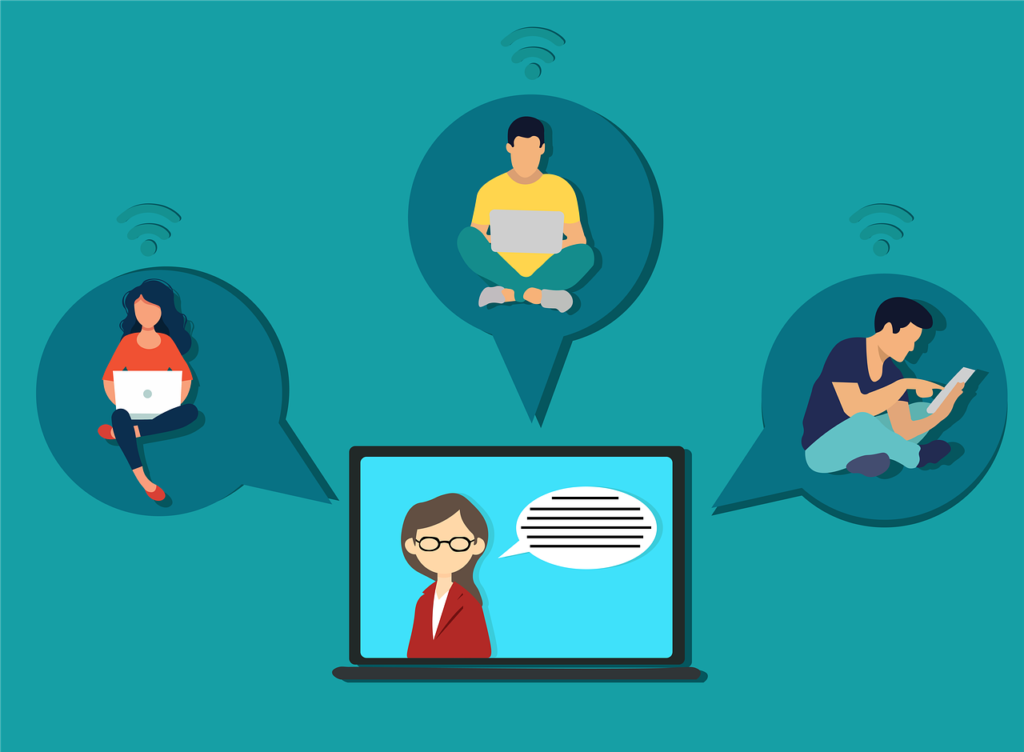
As we approach 2025, the world stands on the brink of significant technological transformation. Often referred to as the Fourth Industrial Revolution (4IR), this new era promises to drastically change the way we live, work, and interact with the world around us. Building upon the technological advancements of the previous industrial revolutions — from steam engines and electricity to computing and the internet — the Fourth Industrial Revolution integrates cyber-physical systems, artificial intelligence (AI), internet of things (IoT), advanced robotics, and more.
In this blog post, we’ll explore the key technologies that will define the Fourth Industrial Revolution, their impact on various industries, and how individuals and organizations can prepare for the changes ahead.
What is the Fourth Industrial Revolution?
The Fourth Industrial Revolution is a fusion of advances in digital technologies, biotechnologies, and physical systems. Unlike previous revolutions that were marked by specific, singular inventions (such as the steam engine or the computer), 4IR represents a convergence of technologies that will blur the lines between the physical, digital, and biological worlds.
Technologies that were once considered futuristic or science fiction — from self-driving cars and smart cities to human-machine collaborations — are becoming more mainstream, reshaping industries and human society at large.
Key Characteristics of the Fourth Industrial Revolution:
- Advanced Automation and AI:
- Automation technologies and artificial intelligence are enabling machines to perform tasks that were previously done by humans, often more efficiently and with greater accuracy.
- AI systems can analyze vast amounts of data, make decisions, and even improve their own performance over time without human intervention.
- Connectivity (Internet of Things – IoT):
- IoT refers to the network of physical devices, vehicles, home appliances, and more, all embedded with sensors, software, and other technologies to connect and exchange data.
- These connected systems allow real-time monitoring and control, improving efficiency and enabling new capabilities like smart cities, self-driving cars, and smart factories.
- Big Data and Analytics:
- The Fourth Industrial Revolution leverages massive amounts of data from various sources to drive decision-making, optimize processes, and create personalized experiences.
- Advanced analytics, machine learning, and predictive modeling help businesses extract insights from this data to forecast trends, improve customer service, and optimize operations.
- 3D Printing and Additive Manufacturing:
- 3D printing enables the creation of complex, customized products with reduced waste and lower production costs.
- Industries such as manufacturing, healthcare, and construction are benefiting from the ability to quickly prototype, design, and produce goods directly from digital models.
- Blockchain Technology:
- Blockchain provides decentralized, secure, and transparent systems for managing digital transactions and verifying the authenticity of information.
- It’s being used for various purposes, including cryptocurrency (e.g., Bitcoin), supply chain transparency, digital identity verification, and smart contracts.

- Biotechnology and Genetic Engineering:
- Advances in biotechnology, including CRISPR gene-editing, have revolutionized medicine, agriculture, and environmental sustainability.
- Personalized medicine, bioinformatics, and synthetic biology are creating new treatments, therapies, and sustainable solutions to global challenges.
- Augmented Reality (AR) and Virtual Reality (VR):
- AR and VR technologies are transforming how we interact with information, providing immersive experiences for gaming, training, education, design, and retail.
- For example, VR is used for virtual simulations and training in fields like healthcare, while AR overlays digital information in real-world environments (e.g., navigation or product demonstrations).
- Cyber-Physical Systems (CPS):
- These are integrations of computing (digital systems) and physical processes, enabling greater interaction between digital and physical environments.
- Examples include smart grids, self-driving cars, and intelligent robotics in manufacturing that can autonomously adjust based on real-time data.
- Sustainability and Green Technologies:
- The Fourth Industrial Revolution is also helping address sustainability challenges through innovations in energy efficiency, renewable energy sources, waste management, and sustainable agriculture.
- Technologies like AI and IoT help optimize the use of resources, monitor environmental factors, and reduce carbon footprints.
Impact of the Fourth Industrial Revolution:
- Economic Changes: 4IR is transforming industries by automating tasks, creating new business models, and disrupting existing ones. Companies are adopting new technologies to remain competitive, and new markets are emerging, while traditional jobs are being automated or reshaped.
- Job Market Shifts: While automation and AI may lead to job displacement in some sectors, they also create new opportunities in technology, data analysis, machine learning, and renewable energy fields. The demand for highly skilled workers is increasing, while less skilled jobs may decrease.
- Social and Cultural Transformation: The Fourth Industrial Revolution brings about significant changes in how people live, work, and communicate. Digital technologies facilitate greater connectivity and social interaction, while simultaneously raising concerns about privacy, cybersecurity, and the ethical implications of these technologies.
- Healthcare Advancements: Technologies like AI, biotechnology, and personalized medicine are improving diagnosis, treatment, and patient care. The ability to analyze large datasets for patterns and develop custom treatments offers huge potential for medical advancements.
- Global Connectivity: The increased use of the internet and connected devices creates a more interconnected world, with people and organizations collaborating across borders in real-time. However, this also presents challenges related to data privacy and security.
How Will the Fourth Industrial Revolution Impact Industries?
1. Manufacturing and Industry 4.0
- Automation and Robotics: Increased use of robotics and AI-driven automation will streamline production, reduce human error, and improve precision. This leads to faster production cycles, reduced costs, and the ability to operate 24/7 without human intervention.
- Smart Factories: The integration of IoT into manufacturing processes allows for real-time monitoring of equipment, predictive maintenance, and data-driven optimization of production lines.
- Custom Manufacturing: 3D printing (additive manufacturing) will enable on-demand, customized production with less waste, offering a more agile manufacturing process tailored to specific customer needs.
2. Healthcare
- Personalized Medicine: Advances in genomics, CRISPR, and biotechnology will enable more personalized treatments based on an individual’s genetic makeup, leading to more effective and targeted therapies.
- AI in Diagnostics: AI and machine learning algorithms can analyze medical images and patient data with high accuracy, helping doctors diagnose diseases earlier and more reliably.
- Remote Monitoring and Telemedicine: IoT-enabled devices will allow patients to be remotely monitored, enabling real-time tracking of their health metrics. Telemedicine will provide more accessible healthcare, reducing the burden on physical hospitals.
- Drug Development: AI and big data analytics will accelerate drug discovery, reducing the time and cost required to bring new medications to market.
3. Retail
- Customer Experience: Retailers will use AI to personalize shopping experiences, recommend products, and create targeted marketing campaigns. Chatbots and virtual assistants will enhance customer service by providing instant support.
- E-commerce and Automation: Automation in warehousing, inventory management, and delivery will make online shopping faster and more efficient. Robots, drones, and autonomous vehicles will be used for order fulfillment and delivery.
- AR and VR: Augmented Reality (AR) and Virtual Reality (VR) technologies will revolutionize the retail experience by allowing customers to try products virtually before making a purchase (e.g., trying on clothes or visualizing furniture in their home).
4. Financial Services
- Blockchain and Cryptocurrencies: Blockchain technology offers secure, transparent, and decentralized ways to manage transactions. It can reduce fraud, increase trust in financial transactions, and enable innovations like smart contracts. Cryptocurrencies and digital assets are also transforming payment systems.
- AI in Risk Assessment and Fraud Detection: AI models will be increasingly used for real-time fraud detection, credit scoring, and risk management, offering more accurate predictions and safer financial transactions.
- FinTech Innovations: The rise of FinTech companies, driven by AI, blockchain, and mobile technology, is making financial services more accessible, with innovations like peer-to-peer lending, robo-advisors, and mobile wallets disrupting traditional banking.

5. Transportation and Logistics
- Autonomous Vehicles: The development of self-driving cars, trucks, and drones will disrupt the transportation and logistics sectors by improving safety, reducing costs, and increasing efficiency in the movement of goods and people.
- Smart Supply Chains: IoT devices and AI will enable real-time tracking of goods and more efficient supply chain management. Predictive analytics will allow businesses to better forecast demand, optimize inventory, and reduce waste.
- Urban Mobility: The integration of electric vehicles (EVs), autonomous taxis, and other sustainable transportation methods will redefine urban mobility, making cities smarter and reducing traffic congestion and pollution.
6. Energy
- Renewable Energy and Smart Grids: AI and IoT will optimize the management of energy resources, enabling smarter and more efficient distribution of electricity. Smart grids will allow real-time monitoring and optimization of energy consumption, while AI will forecast demand and balance the grid.
- Energy Storage and Battery Technologies: Advances in battery storage and energy management systems will make renewable energy sources like solar and wind more reliable, ensuring that energy can be stored for use during periods of low generation.
- Decentralization: The rise of decentralized energy production (e.g., solar panels on homes) will allow individuals and businesses to produce and sell energy, transforming the traditional energy landscape.
7. Agriculture
- Precision Farming: IoT-enabled sensors, drones, and AI-driven analytics will provide farmers with real-time data on soil health, weather conditions, and crop growth, allowing for precision farming that maximizes yield while minimizing waste and resource use.
- Automation: Autonomous tractors, harvesters, and drones will automate labor-intensive tasks, reducing the need for manual labor and improving efficiency in agriculture.
- Sustainability: Biotechnology and genetic engineering will help create drought-resistant crops and increase food production. Meanwhile, vertical farming and controlled environment agriculture (CEA) will make farming more sustainable by using less land and water.
8. Education
- Personalized Learning: AI and machine learning will enable personalized learning paths for students based on their abilities, progress, and learning styles. Virtual tutors and intelligent learning assistants will provide real-time support.
- Virtual and Augmented Reality: AR and VR will transform education by offering immersive, hands-on learning experiences. Students can visit historical sites, conduct scientific experiments, or practice surgeries in virtual environments.
- Online Education Platforms: The rise of digital education platforms and Massive Open Online Courses (MOOCs) is democratizing access to education, enabling lifelong learning opportunities and increasing access to knowledge.
9. Construction and Real Estate
- Smart Buildings: IoT and AI will enable buildings to become smarter by optimizing energy usage, automating systems like lighting and HVAC, and improving safety with smart sensors.
- 3D Printing in Construction: 3D printing will revolutionize construction by enabling faster, more cost-effective building processes and the creation of complex architectural designs.
- Construction Automation: Robotics and AI will automate labor-intensive construction tasks, making construction faster, safer, and more efficient.
10. Telecommunications
- 5G Networks: 5G technology will provide faster internet speeds, lower latency, and the ability to support a larger number of connected devices. This will unlock new applications like autonomous vehicles, remote surgery, and real-time data analytics in industries.
- Edge Computing: Edge computing, which brings data processing closer to the source of data generation (like IoT devices), will reduce latency and enable real-time analytics, particularly in areas like healthcare and manufacturing.
How to Prepare for the Fourth Industrial Revolution?
1. Embrace Lifelong Learning and Upskilling
- Continuous Education: With the rapid pace of technological change, it’s essential to prioritize ongoing education. Encourage workers to engage in online courses, workshops, and certifications in key 4IR technologies such as AI, machine learning, data analytics, cybersecurity, and IoT.
- Soft Skills Development: While technical skills are important, soft skills such as creativity, emotional intelligence, leadership, and problem-solving are becoming even more crucial as machines take over routine tasks. Workers should focus on developing skills that are uniquely human.
- Industry-Specific Skills: Understand the specific needs of your industry and tailor learning programs to focus on skills that will be most relevant. For example, manufacturing workers should familiarize themselves with automation technologies and robotics, while healthcare professionals may need to learn about health tech and digital patient care.

2. Foster Innovation and Adaptability
- Invest in R&D: Organizations should invest in research and development (R&D) to stay ahead of technological trends and create innovative products, services, and solutions that leverage emerging technologies.
- Encourage a Culture of Innovation: Cultivate a work environment where employees feel empowered to experiment, take risks, and think creatively. Emphasize agility and flexibility, allowing teams to quickly adapt to technological changes.
- Open Innovation: Engage with external innovators, including startups, academia, and research institutions. Collaborations with external partners can bring fresh ideas and accelerate the adoption of new technologies.
3. Leverage Emerging Technologies
- Automation and AI: Businesses should explore how AI and machine learning can improve efficiency, optimize processes, and enhance customer experiences. Automation can be used to streamline tasks, while AI can help with decision-making, data analysis, and predictive analytics.
- IoT and Connectivity: Use IoT to gather real-time data from connected devices, which can provide valuable insights into operations and customer behavior. This data can help optimize supply chains, improve product quality, and enhance the customer experience.
- Blockchain: Explore blockchain technologies for secure, transparent, and decentralized systems, particularly for applications in finance, supply chains, and contract management.
- 3D Printing: Consider how 3D printing (additive manufacturing) can enable more efficient, cost-effective production methods, particularly in industries like automotive, healthcare, and construction.
4. Enhance Data Management and Cybersecurity
- Data Governance: As more data is generated through IoT devices and digital interactions, businesses must implement strong data governance practices. This includes ensuring data quality, security, and compliance with regulations like GDPR and HIPAA.
- Data Analytics: Leverage big data and advanced analytics to make informed decisions. Build data analytics capabilities within the organization to process and interpret vast amounts of data from different sources.
- Cybersecurity: With more connected devices and digital assets, the risk of cyberattacks increases. It’s crucial to invest in cybersecurity technologies and develop robust security protocols to protect sensitive information and prevent data breaches.
5. Adopt a Customer-Centric Approach
- Personalization: Use AI and data analytics to provide personalized products, services, and experiences that meet the specific needs of customers. This includes tailored marketing, product recommendations, and customized services.
- Omnichannel Engagement: Businesses should create a seamless, integrated experience for customers across various digital and physical channels. Embrace technologies such as AR, VR, and mobile apps to enhance the customer journey.
- Customer Feedback: Regularly collect feedback and insights from customers to refine products and services. Use digital tools like chatbots and social media listening platforms to engage with customers in real-time.
6. Develop Digital Infrastructure
- Cloud Computing: Migrate to cloud-based platforms to ensure scalability, flexibility, and cost-efficiency. Cloud services enable businesses to store and process large amounts of data, access advanced computing power, and collaborate in real-time.
- 5G Networks: Prepare for the roll-out of 5G networks, which will provide faster, more reliable internet access and enable new applications like autonomous vehicles, smart cities, and real-time remote collaboration.
- Edge Computing: As IoT devices generate massive amounts of data, edge computing can help process data closer to the source, reducing latency and improving performance in applications requiring real-time analysis.
7. Focus on Sustainability and Ethics
- Sustainable Practices: Embrace green technologies and sustainable practices, such as renewable energy, efficient resource usage, and waste reduction. Use AI and IoT to optimize energy consumption and reduce environmental impact.
- Ethical Considerations: As AI, genetic engineering, and other technologies evolve, it is crucial to address the ethical implications of these innovations. Ensure that AI and automation are used responsibly and that technology adoption benefits society as a whole.
- Inclusive Growth: Ensure that all stakeholders, including marginalized groups and communities, have access to the benefits of the Fourth Industrial Revolution. Promote diversity and inclusion in the workforce and in the development of new technologies.
8. Create a Future-Ready Workforce
- Reskill and Upskill: Offer reskilling programs for employees whose jobs may be impacted by automation and AI. Provide training in emerging fields like data science, AI programming, and cybersecurity.
- Flexible Work Environments: With the rise of remote work and digital collaboration tools, businesses should foster flexible work environments that allow employees to work from anywhere and use digital platforms to communicate and collaborate efficiently.
- Collaborative Workforce: Prepare for an increasingly collaborative workforce where humans and machines work side-by-side. Create training programs that integrate human skills with AI and automation tools.
9. Government and Policy Support
- Regulatory Frameworks: Governments should develop policies that ensure the responsible use of new technologies, such as AI, data privacy, and ethical guidelines for automation.
- Public-Private Partnerships: Governments and businesses should collaborate to build the digital infrastructure, promote innovation, and create incentives for businesses to invest in new technologies.
- Social Safety Nets: Governments may need to introduce policies that support workers displaced by automation, such as universal basic income (UBI) or retraining programs.